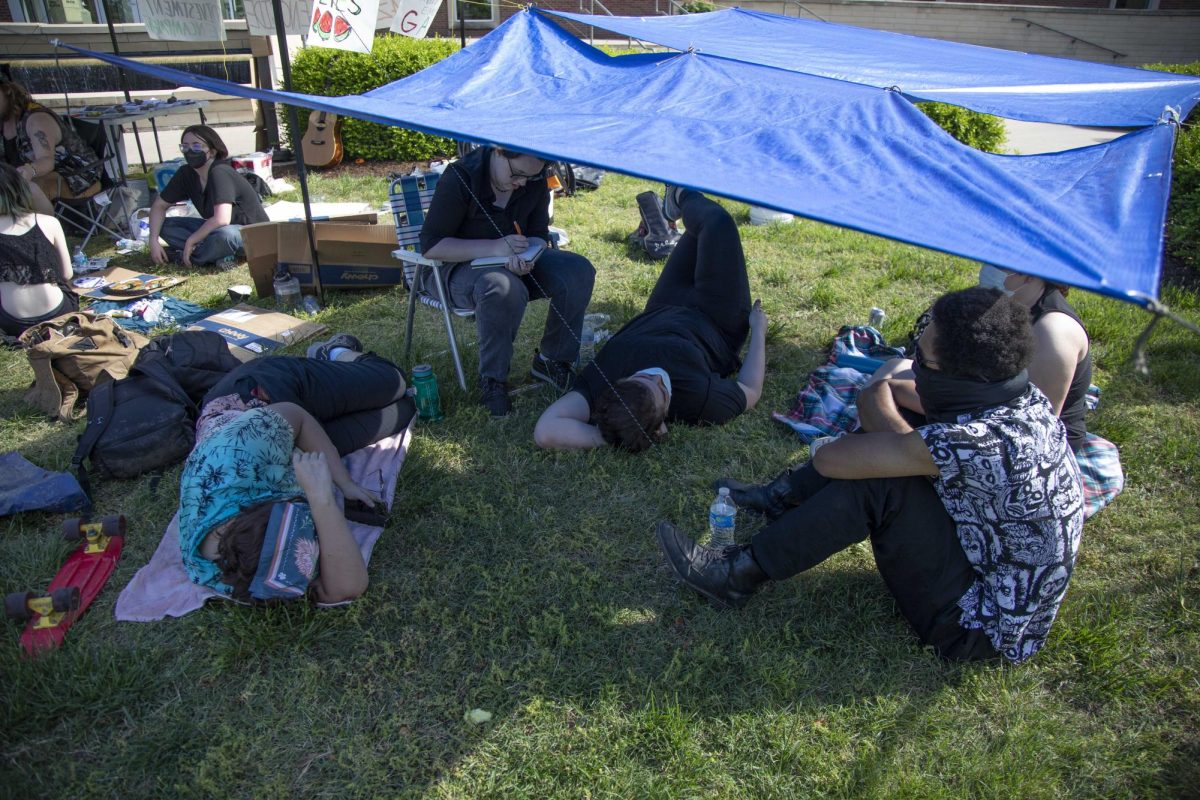Menard may be overcrowded
March 4, 2014
Violence is down at Menard Correctional Center, but the maximum-security prison is overcrowded, according to the 2013 John Howard Association inspection report.
The JHA first started inspecting and reporting on detention centers in 1901.
Menard is a maximum-security state prison for adult males in Chester.
Advertisement
The report used staff assaults, serious inmate assaults, shots fired, chemical agents utilized, weapons confiscated and inmate disciplinary reports to evaluate violence levels.
From 1970 to 2005, prison population in the United States increased by 700 percent, according to a recent report by the Pew Charitable Trust. America incarcerates 25 percent of prisoners worldwide, yet makes up 5 percent of the world’s population.
In January Menard’s maximum-security facility population was 3,332, according to the Illinois Department of Corrections,
The most inmates allowed for operational capacity at Menard is 3,417.
Tom Shaer, director of communications for the Illinois Department of Corrections, said Menard is approximately 100 inmates less than the operational capacity as of Monday and is not overcrowded.
Alan Mills, the Uptown People’s Law Center legal director and an attorney who represents inmates at Menard, said two prisoners are roomed together in one tiny cell.
“This used to be very small for one person and now have two people living in them,” he said. “There literally is not room for two people to stand in that cell at the same time and there’s no air circulation so they will typically spend 23-24 hours a day sitting inside that cell with nothing to do other than lying in bed or watching television, if they are lucky enough to have a TV.”
Advertisement*
Shaer said no state in the United States puts only one inmate per cell, and the correctional center does not keep inmates in their cells for nearly that long. He said the majority of the cells do not consist of two prisoners.
The JHA report states, “With double-cells as small as 4-feet-8 inches wide, inmates at Menard may experience the paradoxical detriment of both being crowded and isolated.”
Shaer said 1,908 of the 3,417 are larger than 4-feet-8 inches wide.
Mills said Illinois law has a minimum square-footage requirement of 50 square feet per person, and Menard clearly violates the rule.
Shaer said this is incorrect and Menard is grandfathered by this law because the prison is not new or remodeled.
“70 percent of Menard is not original construction, so the majority of cells are bigger than 4’8”. We agree that 4’8” is not ideal, but no state in the country puts mostly one-inmate-per-cell and they haven’t per years,” Shaer said. “Like most states, approximately 88 percent of Illinois Department of Corrections inmates are two-to-a-cell.”
The law states, “All new, remodeled and newly designated institutions or facilities shall provide at least 50 square feet of cell, room or dormitory floor space.”
Mills said the correctional center is understaffed, underfunded and overcrowded.
“So we have way too many people sitting in their cells with nothing to do. General population does get to go out twice a day for meals, which means they’re out of their cell for a total of about an hour.”
Shaer said inmates eat three meals each day.
He said 92 percent of inmates at Menard have an hour for daily exercise, over an hour each day for meals and those who are enrolled have an hour each day of class.
Inmates also have time for health care appointments, time to meet with counselors and some are cleared to manufacture goods in the prison shops, Shaer said. He said inmate workers pay is deposited to their personal accounts for commissary goods.
About 300 of the 3,000 inmates at Menard are in classes and are taught by five teachers.
“There is only one leisure-time services which are supposed to be coordinating whatever recreational and educational activities there are at the prison,” he said. “One for all 3,000 prisoners, so there’s no way the staff can actually do anything there.”
While the report states overall violence is down, inmate-on-inmate assaults increased from 80 to 109 from 2012 to 2013. The number of serious inmate-on-staff assaults increased from five to eight as well.
Mills said while the center has troubles, it made strides by cutting down on lockdowns.
Shaer said the number of lockdowns at Menard has had a tremendous decrease.
“We’ve had only three full lock downs since last May that were not health related,” Shaer said. “We did do some lockdowns in part of the facility because some of the inmates had the flu and we didn’t want it to spread.”
Gregory Koger, a member of the Stop Mass Incarceration Network, said solitary confinement is illegal under international law.
Koger went to prison when he was 17 for being affiliated with a street gang and spent over six years in solitary confinement.
“Solitary confinement is technically considered torture under international law,” Koger said.
He said international law states solitary confinement is illegal beyond 15 days and it is estimated over 80,000 prisoners are held in some form of solitary confinement in the United States.
Illinois Gov. Pat Quinn moved part of the Menard population there after Tamms Correctional Center closed in Jan. 2013 on his order. Quinn announced the shutdown in Feb. 2012.
Almost one year later, State Sen. Kirk Dillard and State Rep. Jil Tracy have expressed a need to reopen the penitentiary as part of Dillard’s campaign for governor.
“The whole purpose of Tamms was defeated with this cost-saving measure and as a result, we’re seeing 20 percent increase in assaults at the other facilities where these inmates have been put into,” Tracy said in an interview with WGEM Quincy News during a press conference Feb. 17.
Mills said reopening Tamms would be counterproductive.
“Tamms, at its maximum, had less than 300 people in it. So you’d be talking about having 2,700 people in a space that’s really designed for about 1,500,” Mills said. “You’d have to re-staff it, you’d have to spend millions of dollars at this point to reopen it. Then, you’d have to figure out who you are going to put there and you can’t keep people there long-term and you can’t keep people there without a reason.”
Mills said it costs about $90,000 to keep prisoners in Tamms as opposed to $25,000 at Menard. An IDOC report said the annual cost per inmate was more than $20,500.
Shaer said the majority of Tamms inmates went to Pontiac Correctional Center and Menard received just seven new prisoners.
Issues at Menard were made public by recent media outlets that covered protests in support of a hunger strike Jan. 17 and Feb. 13.
Prisoners said the reason for the hunger strike was the lack of due process they received. Mills said some inmates have yet to receive a reason why they are at Menard.
He said IDOC is changing procedures to hold hearings for Menard inmates in the near future. Koger said it is illegal to deny prisoners due process.
Shaer said all inmates, including administrative detention, know why they are in the correctional facility and have all received due process.
According to IDOC, 56 percent of inmates at Menard are in the correctional center for murder and 26 percent are there for Class X crimes, which includes sexual assault and aggravated kidnapping. Others are there for Class one, two, three and four felonies.
Mills said he believes the solution is to have productive activities for prisoners serving time.
“They won’t have any skills whatsoever, they won’t have any ability to deal with people. They won’t be able to do anything but sit in a room when they come out,” he said. “That’s not an advantage to anybody in society.”
Uptown People’s Law Center is currently working on two class-action cases, the most important involving inmates with mental health issues, Mills said. He said a large number of prisoners in segregation cells have mental problems and are not being treated.
Shaer said Menard has a large mental health staff and inmates are not put in segregation because they have mental health needs.
“The primary reason for segregation is to segregate those who violated the rules usually in a physically aggressive or harmful way,” he said. “We’re very sensitive to health care needs.”
Staughton Lynd, author and civil rights activist, said there is still much to be done.
“If anyone wanted to do something helpful who is located in Carbondale, I would say go out to that prison and put up a big sign and make some noise,” Lynd said. “It would mean a lot to the people inside.”
Advertisement








